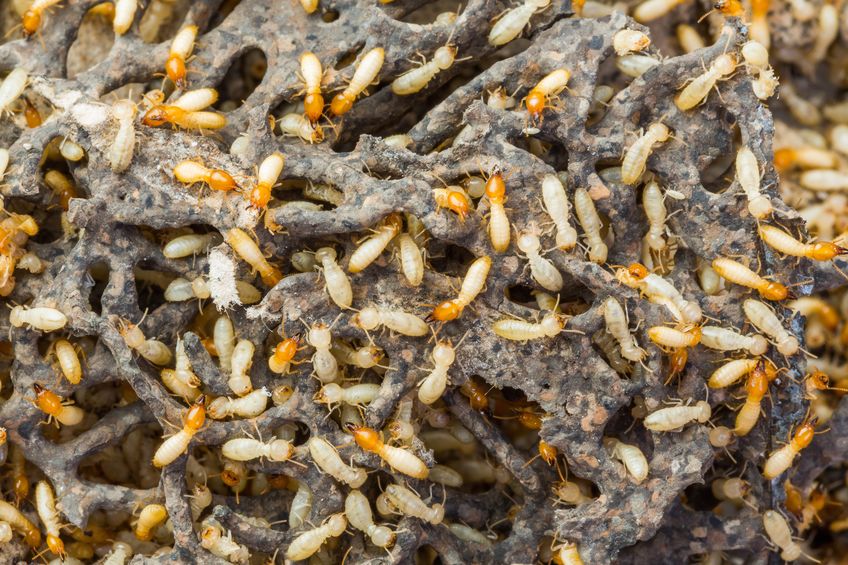Termites are the most destructive structural pests in the United States where they inflict more than one billion dollars in property damage annually. There are three groups of termites known as subterranean, drywood and dampwood termites, and multiple species from each of these groups are known pests in the US. However, subterranean termites are by far the most destructive of these three groups, as they are responsible for 80 percent of all termite-related structural damage recorded annually in the country. Several subterranean termite species in the US are major structural pests, and the most damaging species of all, Reticulitermes flavipes, can be found in Massachusetts. This species is more commonly known as the “eastern subterranean termite.”
New subterranean termite colonies are always initiated by reproductive swarmers known as “alates.” Alates take flight from mature subterranean termite colonies every year during the late spring and early summer seasons in Massachusetts. The vast majority of alates do not survive to mate and start new colonies, but the ones that do start new colonies within moist soil. Alates that mate and carve out a nest in soil become the queen and king of new colonies. Colonies grow slowly, but after four to seven years of maturation, colonies reach maturity and begin to produce alates.
In extremely rare circumstances, alates establish new colonies directly in structural wood, but this only occurs if the structural wood being colonized is sufficiently moist to support a growing colony. Many subterranean termite infestations start when workers from mature colonies infest structural wood that is in contact with the ground soil. Most homes do not contain structural wood members that make contact with the ground soil, but workers often access homes by first infesting patios or decks that do contain structural wood members that make contact with the ground. Workers also commonly access structural wood by traveling upwards through dirt backfill within cement stoops. Termiticide perimeter barriers around homes can prevent worker termites from reaching structural wood, and baiting systems are useful for both preventative and remedial termite control programs.
Is your home structurally vulnerable to subterranean termite infestations?

